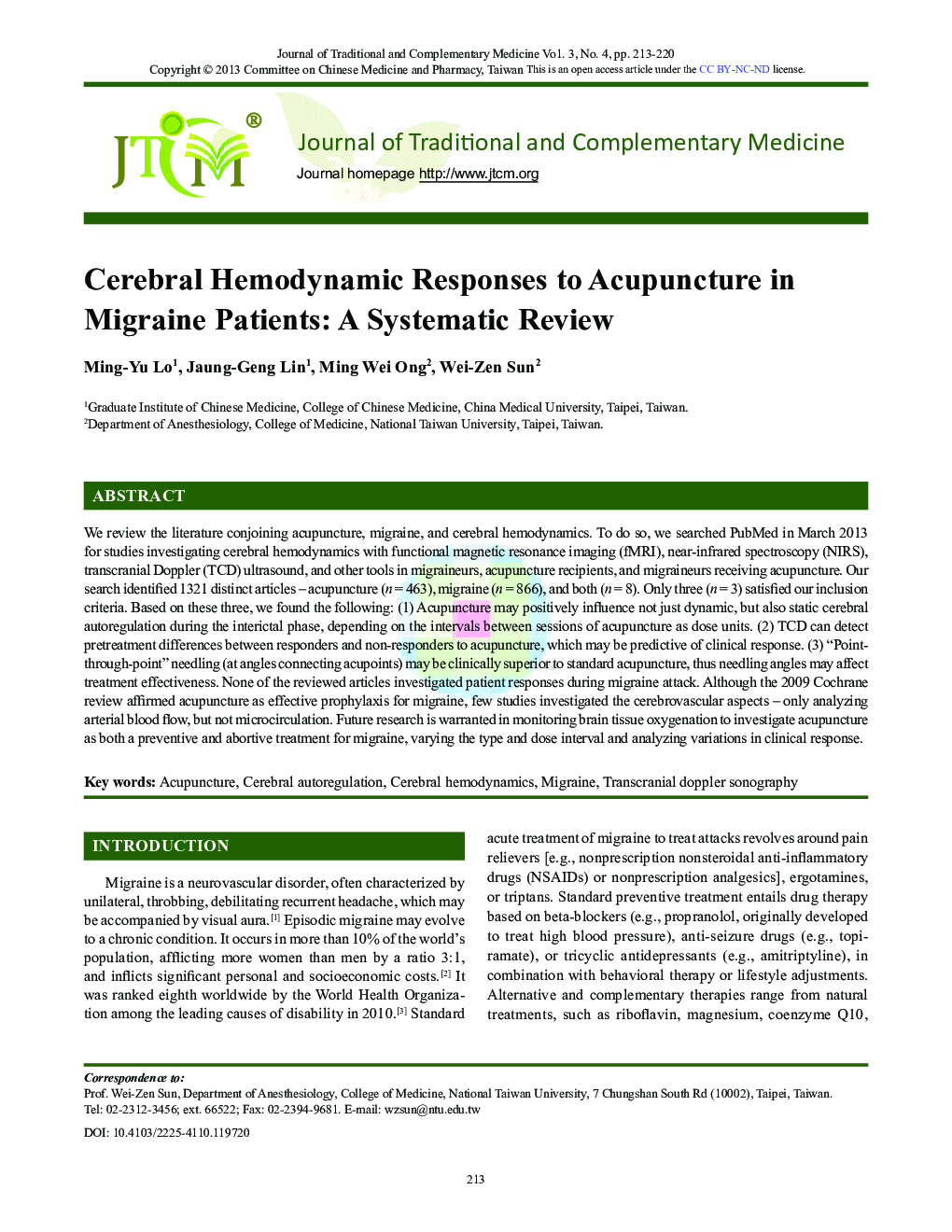| Article ID | Journal | Published Year | Pages | File Type |
|---|---|---|---|---|
| 3099799 | Journal of Traditional and Complementary Medicine | 2013 | 8 Pages |
ABSTRACTWe review the literature conjoining acupuncture, migraine, and cerebral hemodynamics. To do so, we searched PubMed in March 2013 for studies investigating cerebral hemodynamics with functional magnetic resonance imaging (fMRI), near-infrared spectroscopy (NIRS), transcranial Doppler (TCD) ultrasound, and other tools in migraineurs, acupuncture recipients, and migraineurs receiving acupuncture. Our search identified 1321 distinct articles – acupuncture (n = 463), migraine (n = 866), and both (n = 8). Only three (n = 3) satisfied our inclusion criteria. Based on these three, we found the following: (1) Acupuncture may positively influence not just dynamic, but also static cerebral autoregulation during the interictal phase, depending on the intervals between sessions of acupuncture as dose units. (2) TCD can detect pretreatment differences between responders and non-responders to acupuncture, which may be predictive of clinical response. (3) “Point-through-point” needling (at angles connecting acupoints) may be clinically superior to standard acupuncture, thus needling angles may affect treatment effectiveness. None of the reviewed articles investigated patient responses during migraine attack. Although the 2009 Cochrane review affirmed acupuncture as effective prophylaxis for migraine, few studies investigated the cerebrovascular aspects – only analyzing arterial blood flow, but not microcirculation. Future research is warranted in monitoring brain tissue oxygenation to investigate acupuncture as both a preventive and abortive treatment for migraine, varying the type and dose interval and analyzing variations in clinical response.
